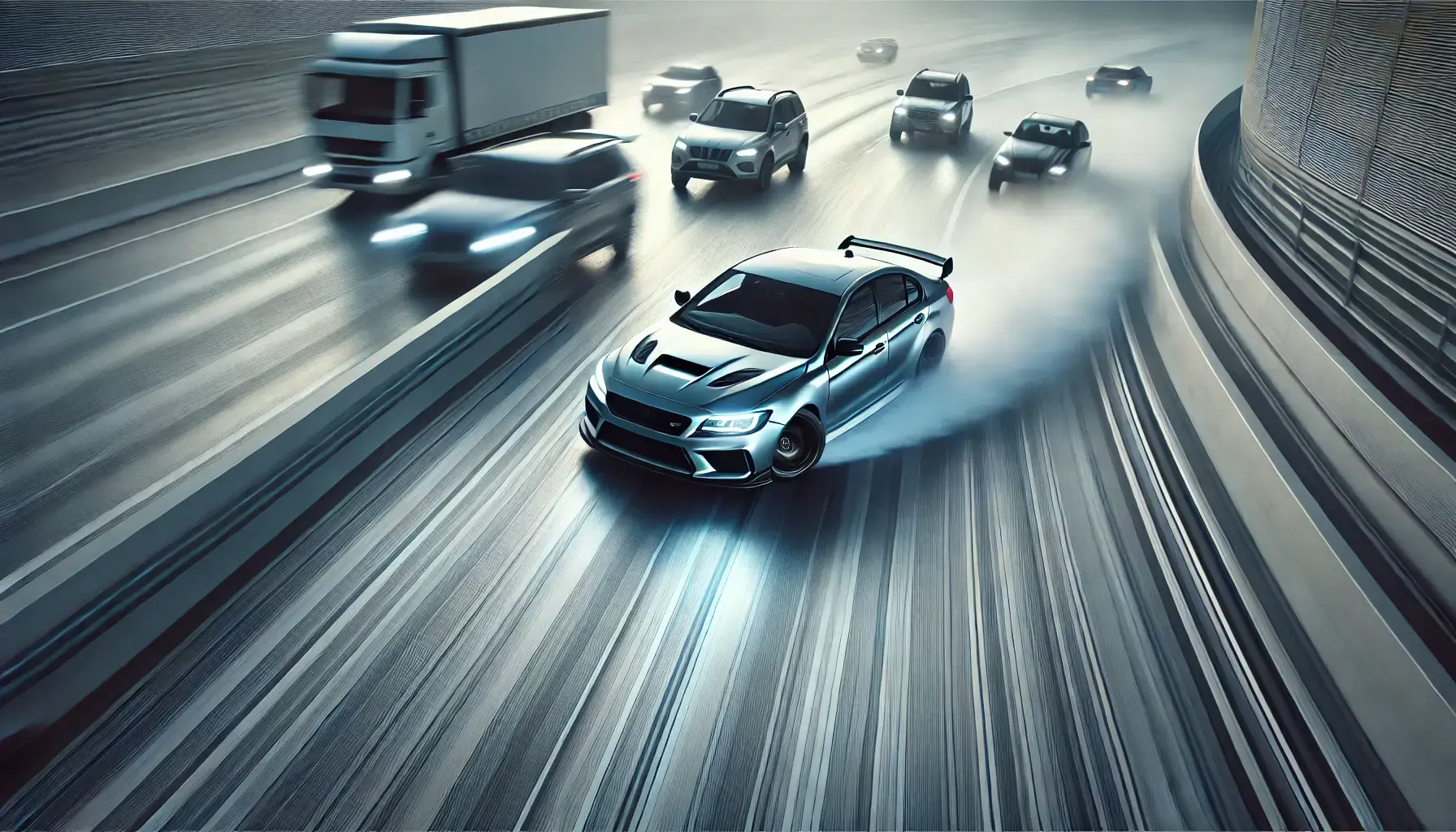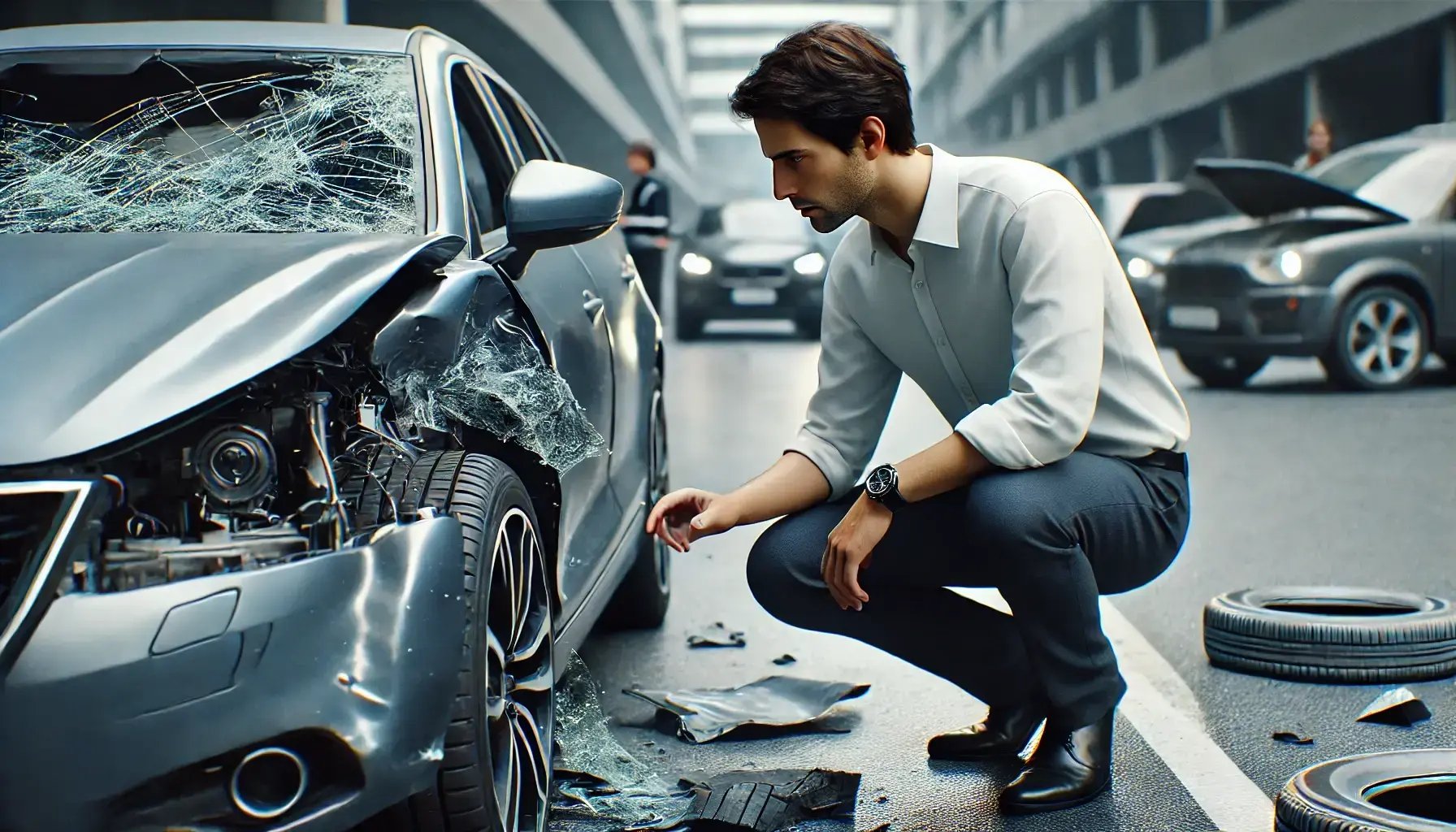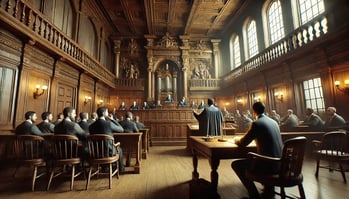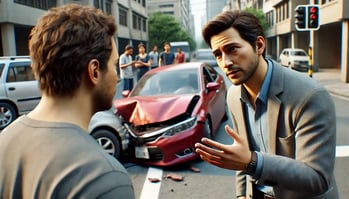If Someone Cuts You Off and You Hit Them, Who is at Fault?

Legally reviewed by:
Daniel Smith November 6, 2024
Although unsafe, chances are you have either been cut off or have cut someone else off at least once if you have been driving for at least a year. A 2019 survey by The Zebra showed that at least 45% of drivers have cut someone off in the past.
Cutting someone off is generally deemed unsafe driving, and it could lead to accidents. The most likely accident is someone cutting you off and you hitting them.
This article considers who is at fault in those accidents, what to do if you're ever in an accident where someone cuts you off, and other relevant subjects.
What Does It Mean if Someone “Cuts You Off”?
To be “cut off” in traffic can mean slightly different things to different people. But it is generally the same idea.
You can say you have been cut off when another driver aggressively pulls into your lane, forcing you to hit the brakes or swerve to avoid colliding with them. In most cases, the aggressive driver also does not correctly signal before joining your lane or forces the merge when there's less than a car length of space available ahead of you.
The driver cutting you off may also do so at a high speed. Most importantly, they do not ensure that they leave a proper following distance between themselves and you after joining the lane.
Some drivers consider themselves to have been cut off if they have to decelerate because another car gradually pulls in front of them. However, that is not the widely accepted definition of being cut off because it is safe driving practice to always stop accelerating if another car is trying to overtake and merge into your lane.
Who Is at Fault If an Accident Occurs?
Generally, the driver who cuts you off will be liable for an accident. As we mentioned earlier, cutting another driver off qualifies as aggressive or dangerous driving. Without the actions of the driver who cut you off, the accident would not have happened.
Almost all states also have laws that prohibit cutting other people off in traffic. For instance, Arkansas’ Ark. Code § 27-51-104 prohibits improper or unsafe lane changes on public roadways.
Similarly, Florida’s Fla. Stat. § 316.085 stipulates that a driver who changes lanes while interfering with the safe operation of any vehicle approaching from that direction or without first determining that another is not coming in the lane they intend to change into will be guilty of a traffic infraction.
In addition, states have laws stipulating that merging drivers must yield to cars already in the lane they intend to merge into and only merge when it is safe to do so. Therefore, a driver who pulls in front of you should ideally only do so when it is completely safe.
This general rule of the driver who cut you off being responsible will apply in the following scenarios:
- If you end up rear-ending the car, that cuts you off.
- If you swerve while trying to avoid colliding with the car that cut you off, you may hit another car or go off-road.
- If a vehicle turns into your lane without signaling and ends up crashing into the side of that car.
However, it is also possible that the driver who cut you off is not entirely responsible.
To illustrate, if a driver cuts you off and you slam the brakes to avoid hitting them, but in doing that, the car behind you rear-ends you, both the driver behind you and the driver who cut you off may share responsibility.
Why? While the driver who cut you off is primarily responsible for causing you to stop abruptly, the fact that the driver behind did not safely reduce their speed to avoid hitting you means they were either following too closely or too distracted to notice you stop immediately.
Of course, this scenario assumes that your stop signals (brake lights) were working correctly during the accident; you may also be partially liable if they were not.
In other situations, you will still be partially at fault for an accident that results from being cut off. This includes If there was a reasonable opportunity to avoid a crash, but you failed to take that opportunity because you were distracted or continued to increase your speed.
A reasonable opportunity here means that a driver of similar skill, given that same opportunity, will have successfully avoided a crash. Another situation in which you may be partially at-fault includes if you engage in a reckless driving practice like driving under the influence of alcohol or drugs.
If you are found to be partially at fault for the accident, your ability to recover damages will depend on the negligence practice of the state where the accident occurs.
In contributory negligence regions like the District of Columbia (Wingfield v. Peoples Drug Store, Inc., 379 A.2d 685 (D.C. 1977)) and Maryland (Board of County Comm’r of Garrett County v. Bell Atlantic, 695 A.2d 171), you will be barred from seeking compensation from the other party in court.
Meanwhile, in pure comparative negligence states like Mississippi (Miss. Code Ann. § 11-7-15) and New York (N.Y. C.P.L.R. § 1411), your potential compensation will be reduced in proportion to your fault in the accident, but you will not be prevented from recovering damages no matter how much fault you bear.
However, in modified comparative negligence states like North Dakota (N.D. Cent. Code § 32-03.2-02) and Texas (Tex. Civ. Prac. & Rem. Code § 33.001), you must be less than 51% (or 50% in some states) responsible for the accident to qualify to seek damages.
What To Do If This Happens to You

Proving you are not responsible for an accident caused by another driver cutting you off can be difficult. This is often so because in rear-end accidents (the most likely type of accident after you're cut off), the driver behind will be initially assumed responsible.
To ensure you're not unfairly blamed for this accident, it is essential to take the following steps:
Stop and assess damages
After all accidents, no matter how minor, you are legally required to stop your vehicle. Once you fail to stop, you become guilty of a hit-and-run.
After stopping, evaluate the damages caused by the accident. This is crucial and will determine your next steps.
If you discover anyone has been killed or injured in the accident, immediately call the police. You should also contact the police if the accident results in significant property damage, which is defined differently across state lines.
If you are unsure what constitutes substantial property damage in your state, call the police when the cost of property damage is over $250.
If no one has been killed or injured, and it will be safe to move your vehicle from where you have stopped it, move it to the nearest and safest parking spot where it won’t obstruct traffic.
Take evidence
As the rear driver, it is pertinent that you collect as much evidence that will be favorable to your claim. The easiest way to do this is through pictures and videos.
Take pictures and/or videos of the damage to your car, the damage to the other person's car, and anything else that may help your claim.
If someone was injured by the accident, and you have not moved the vehicles from the accident spot, ensure you capture the collision of the cars and the general accident scene or anything that may help your subsequent claim.
You should also focus on getting evidence that proves the car ahead indeed cut you off. If you do not have a dashcam from which you can recover footage of the accident, look around the area for cameras that may have caught the accident and note down any you find.
Also, endeavor to speak to any eyewitnesses. Confirm what they saw and get a signed statement, or make a video of them explaining what they saw with their consent. Then, get their name, address, and phone number.
Exchange information
Talk to the other driver and exchange essential information. Here, you want to give and request their names, addresses, phone numbers, and vehicle registration numbers.
You will also need to exchange essential insurance information that will allow them to contact your insurer, so also give and request the insurer's name, the insurer's closest address, and policy number. Finally, you can request to see their license and show yours If they ask to see it.
Consult a doctor
Just to ensure you haven't sustained any hidden or internal injuries as a result of the accident, ensure that you see a doctor as soon as possible. If you discover you have picked up an injury, start treatment immediately.
Get a lawyer
A car accident lawyer can investigate an accident to unearth evidence that favors you, negotiate with an insurance company to ensure you get a reasonable settlement, and represent you in court if necessary.
You should get the best lawyers in your city, present them with the evidence you gathered on the scene, and follow their legal advice.
Notify your insurer
Several insurers require, as part of your policy agreement, that you notify them within a reasonable period if you've been in an accident. And even if your insurer does not require it, It is still advisable that you do.
How The Accident Helpers Can Help You
The success of your claim could significantly depend on your lawyer, especially when you are the rear driver in a rear-end accident that happened because you were cut off. Hence, we always advise that you get the best car accident lawyer in your vicinity.
But if you need help with how to do that, don't worry; we've got you covered. At The Accident Helpers, we maintain a country-wide network of expert car accident lawyers. We will connect you to one in your city for free!
All you have to do is contact us to schedule a meeting where one of our consultants will get all the facts of your case, and we’ll get to helping you,
Contact us today!




